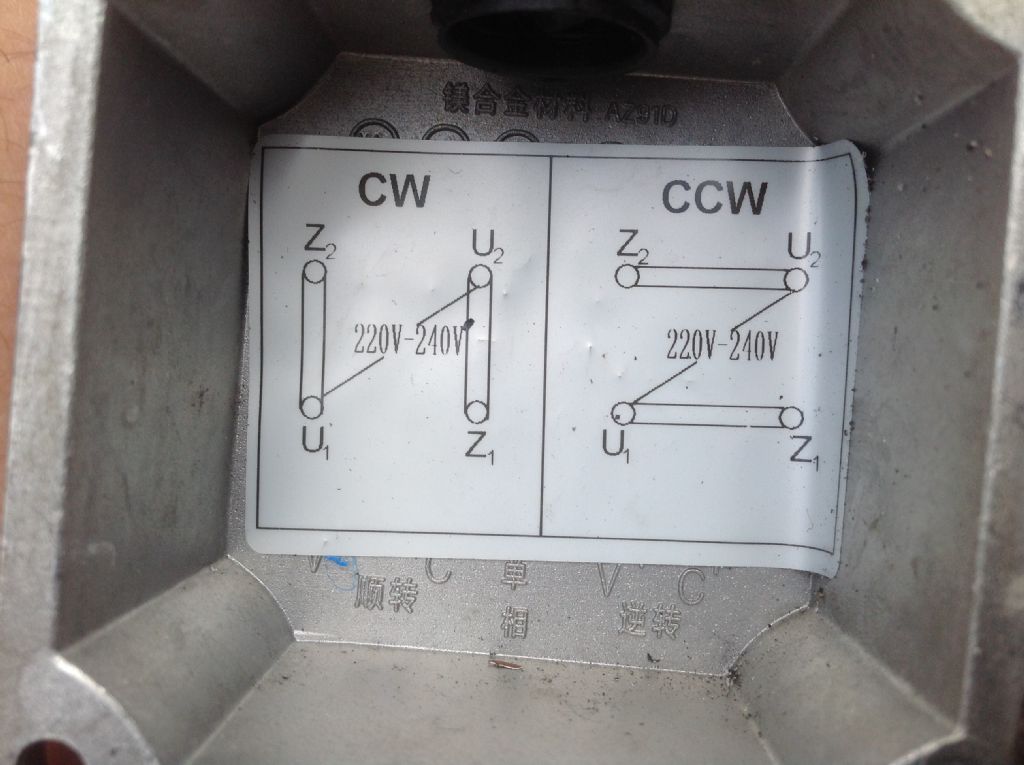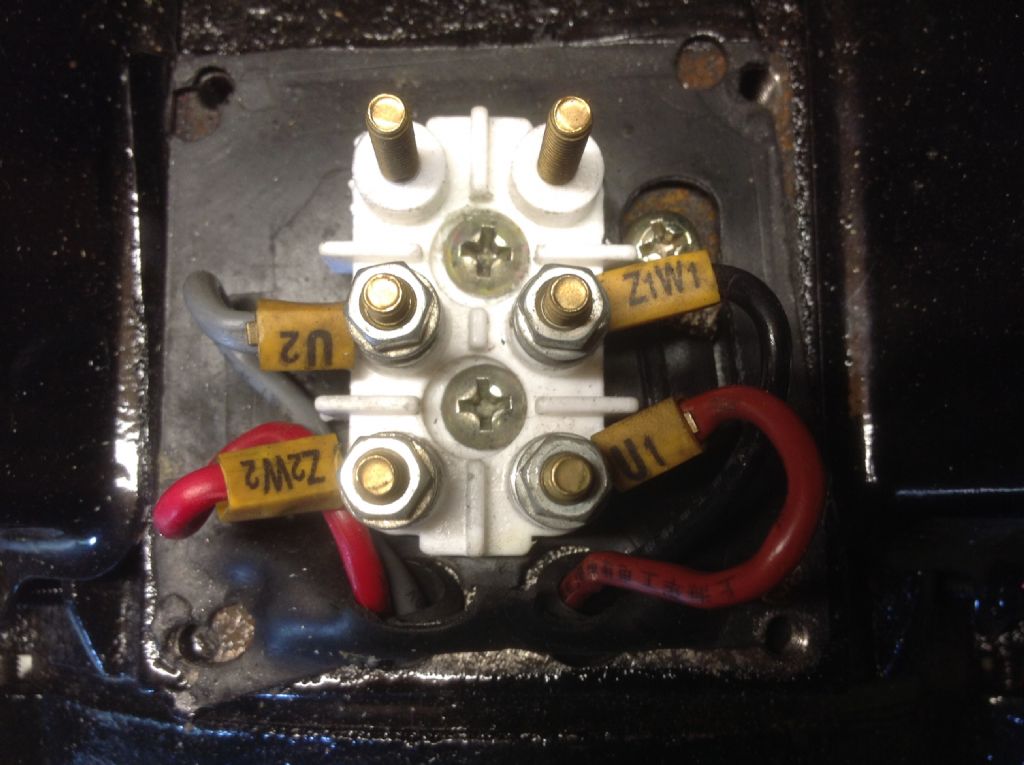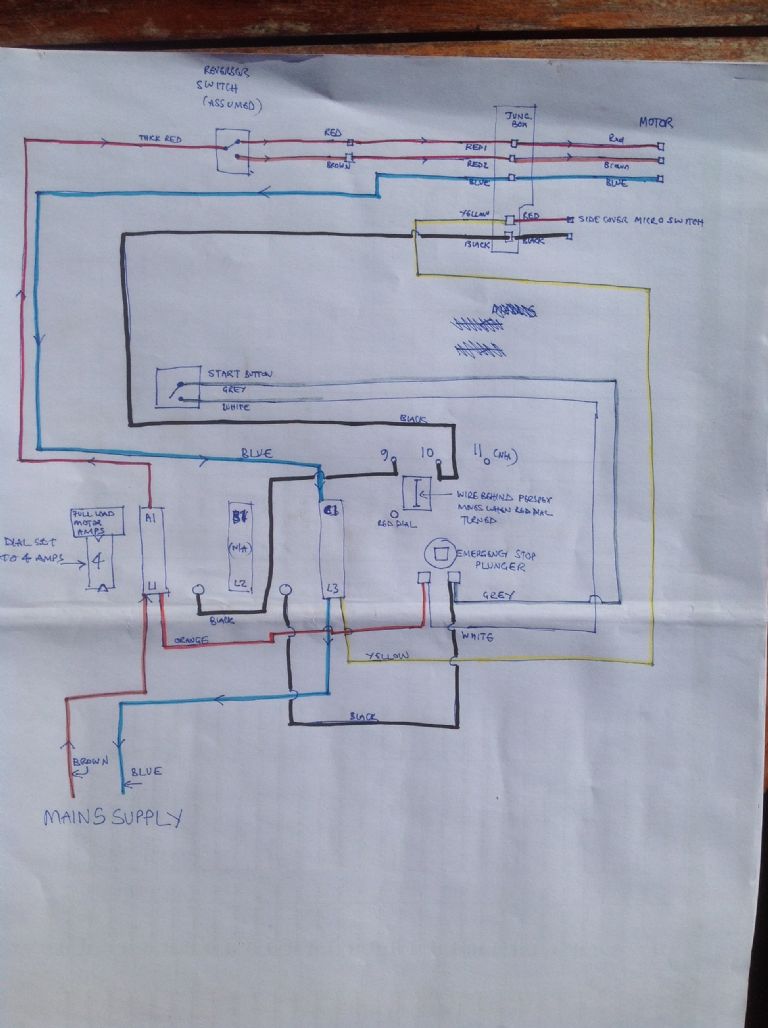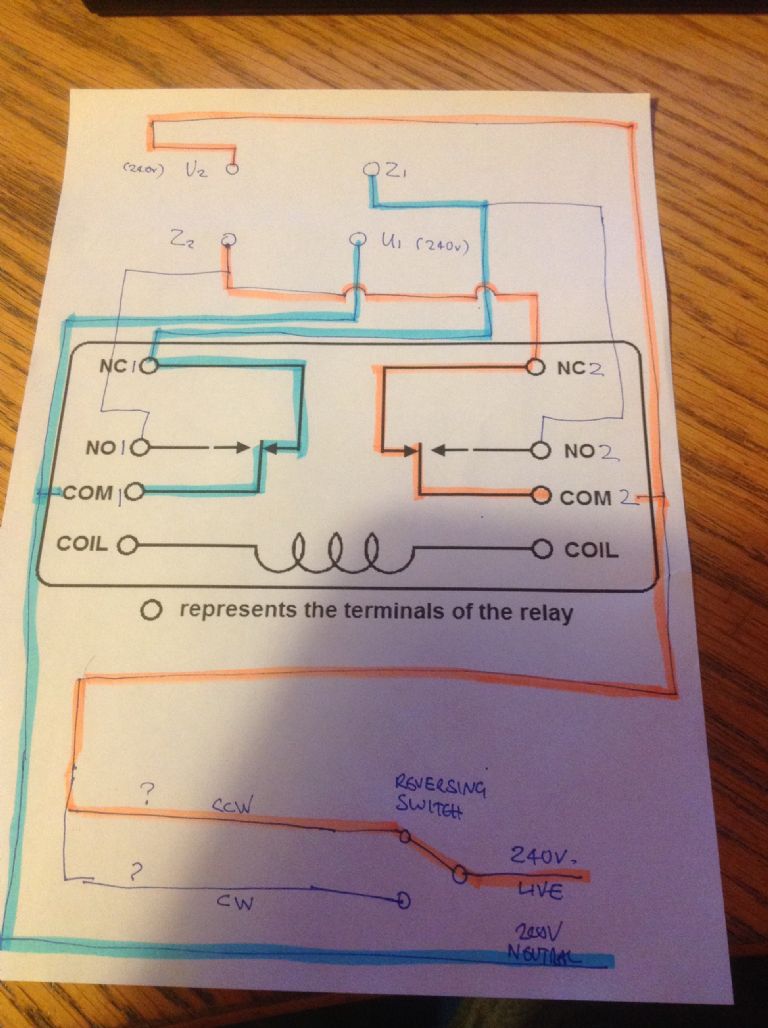Motor is underpowered. With the start winding energised it has enough torque to accelerate the machine from standstill, but then the centrifugal switch opens (at about 70% full speed or thereabouts) and the motor now hasn't got enough torque to continue accelerating the gear train etc up to full speed. So the motor begins to stall, and slows until the start winding is energised again by the centrifugal switch where it begins to accelerate.
Solution is a bigger motor, or don't use the 800 rpm range. Maybe this isn't the original motor – someone maybe converted it from three phase but fitted an undersized motor?
As Neil says, it's just a quirk of the internal geometry of the motor that it will develop enough torque to run to full speed in reverse but not forward. Single phase motors are like that. The gearbox sounds fine, I wouldn't go investigating the bearings, that's just a can of worms which is probably irrelevant for the time being.
We'd still like to know what the motor rating plate says is the rated power of the motor. I've got a Bantam 2 with a 1.0 HP motor, that's not got enough oomph to run at 2000 rpm but otherwise it's fine.
Measuring the supply current on a single phase motor isn't going to resolve anything, you would need to measure power factor as well, as the current stays very nearly constant as the motor is loaded, it's the power factor that changes in response to the shaft load. Also the supply current changes drastically as the start winding cuts on and off so measuring the supply current under running conditions is far from straightforward.
Lovely machine – lots of good work here even if the top speed is outside its capabilities for the time being,
HTH Simon
Ken Price 1.









